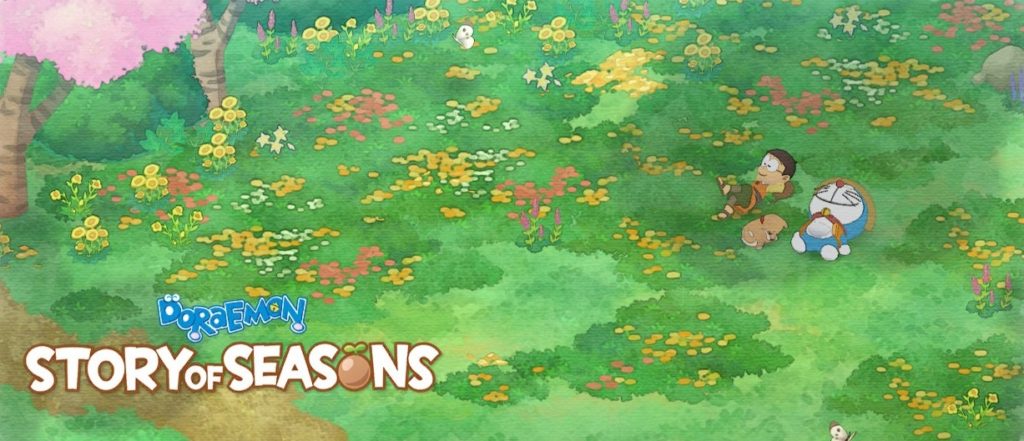
I remember the first time I saw a Doraemon game. Thinking back, it would have been the PC Engine (that’s Turbografx for you domestic only people) game Doraemon Meikyu Daisakusen from 1989. This is back in the late 90s, when imports weren’t really a thing yet and you could get all sorts of weird stuff cheap. I had no idea who Doraemon was at the time though, as the cartoons hadn’t really made to North America on VHS or DVD. There was no way to download shows from the internet, which was only about six years old at the time, and there was certainly nothing like streaming or *gasp* Crunchyroll. All I knew about the game was that it was called Doraemon and it had a blue cat. There were some other games with the same character, so I figured it was a Japan thing, much like NHK’s famous mascot Domo-Kun, who I was also just starting to see. I certainly had no idea that Doraemon was nearly as old as Lupin the 3rd, dating back to the beginning of the seventies with a long and glorious history in anime and manga.
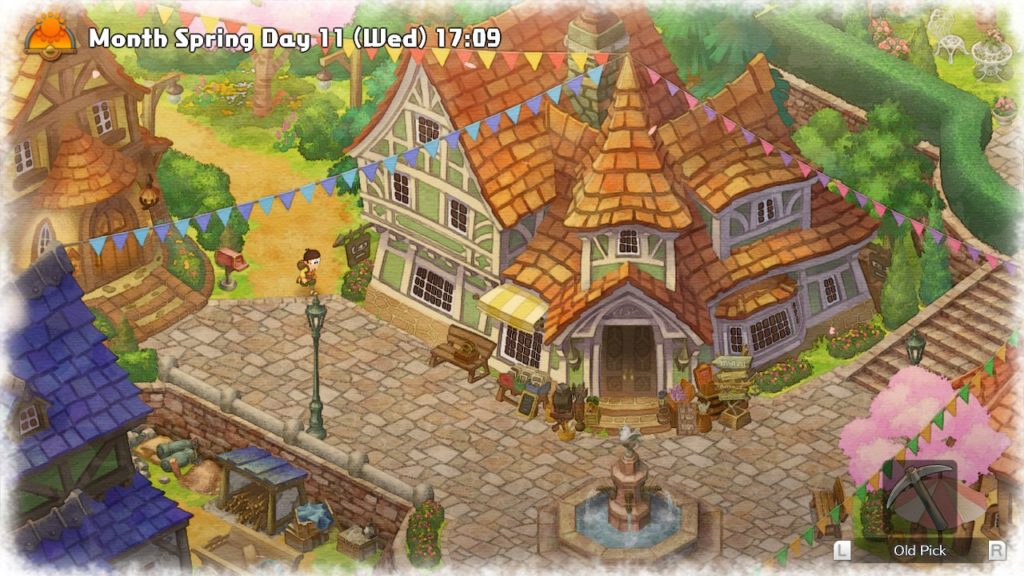
Strangely enough, even with otaku culture blossoming to its current state over the last 20 years or so, Doraemon never really came West until the last 5 or 6 years, and even then, it’s had only middling success, with a smattering of manga and anime being released in English. Considering how revered Doraemon is in Japan, it was actually a bit exciting to see that the first English Doraemon game was finally going to be released in 2019 and linked with the venerated Story of Seasons franchise thanks to Bandai Namco and both Marvelous Inc. and Brownies Inc. (incidentally a subsidiary of Nintendo!). So let’s take a look at the very first English Doraemon game, Doraemon Story of Seasons!
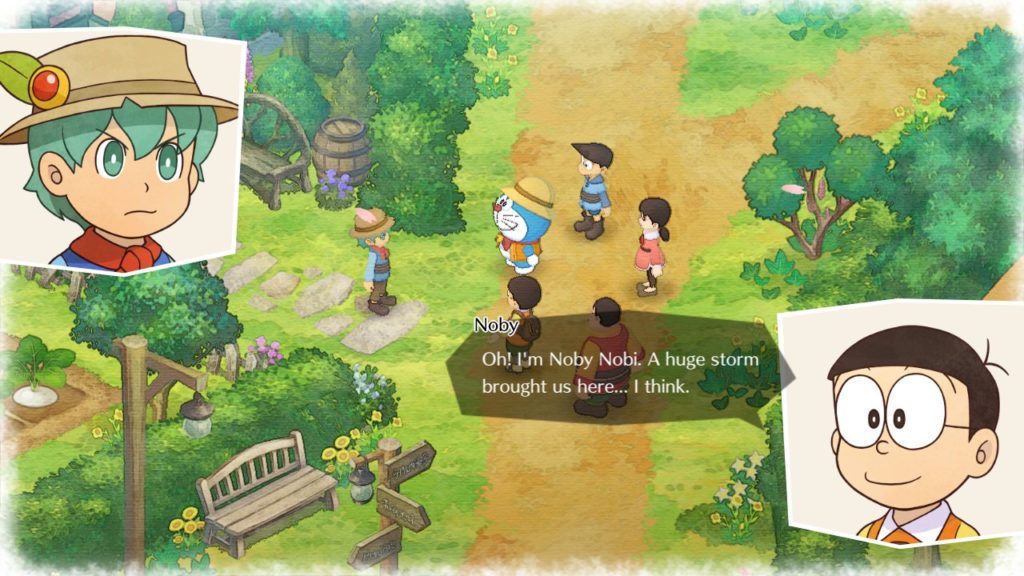
Doraemon Story of Seasons starts out with Doraemon (who is a blue robot cat with all sorts of neat gadgets) and his friends finding and planting a seed. Somehow, this seed manages to grow incredibly fast and causes a rift in space and time, sucking Doraemon, his best friend Nobi Nobi, and their friends Sue, Big G, and Sneech into a vortex in classic anime style. When they wake up, they’re just outside a small village and it definitely isn’t the 22nd century anymore! Naturally, all softs of hijinks are involved and throughout an incredibly extended introduction session (seriously, it’s way longer than I anticipated), you find out where things stand in the town of Natura and its surrounding environs.
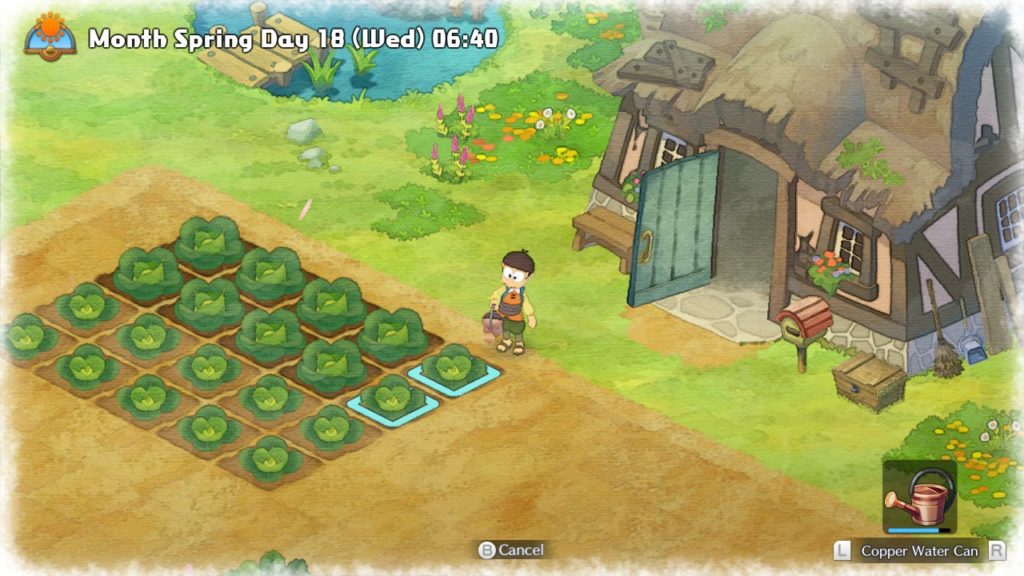
Ultimately, this is a farming game though, and after a while, you’ll get down to the business of farming. You control Nobi and in the beginning, farming is seriously hard work. Turning the earth, planting seeds, and watering them is enough to exhaust our unfortunate hero, and without frequent naps or breaks to talk to the townsfolk, he’ll keel over from exhaustion and have to be revived at the doctor’s office, losing a day’s labor. It’s definitely important to budget your time in Doraemon Story of Seasons (which we’ll abbreviate to DSoS from now on).
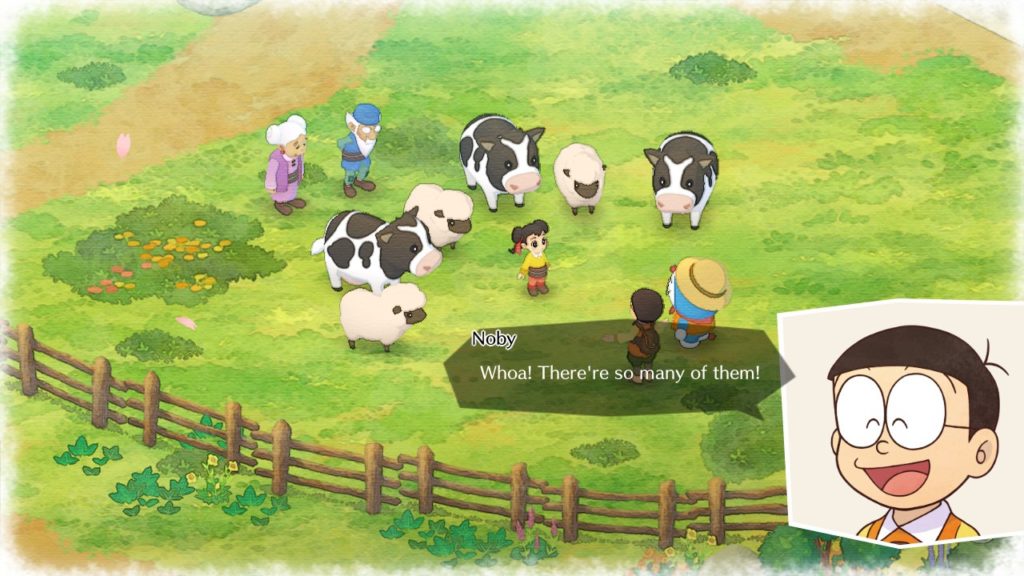
Once you talk to a few people and get your first crops planted, it’s time to get things moving. Talk to everyone. They’ll all have things to say and gameplay revolves not only around farming, but also developing friendships. Unlike other farming games, there are no romantic entanglements, but making lasting friendships is what will get your progress in the game moving and ultimately get you and your friends back to the 22nd century with Doraemon! Fishing, mining, bug-catching, and animal husbandry are all important parts of your daily routine, along with a variety of events and town festivals, marked conveniently on your calendar. You’re going to be here for years, so you’d better participate!

Actual gameplay, especially at first, revolves entirely around crop maintenance and mining, forcing you to upgrade your equipment so you can actually work without burning out. As you make more money, you’ll also expand your house, allowing for more complex tasks like cooking and upgrade your farm equipment to support a variety of animals. The depth of the game is really up to you, but there is a certain degree of tedium inherent in any farming game, and DSoS is no different. There simply aren’t enough hours in the day to do everything and the town runs by the clock, even for the hours that stores are open or closed or where townsfolk might be if you want to get something done. Conveniently, the map shows where everyone is, and though it takes a long time to traverse the map, there are shortcuts to get places faster.
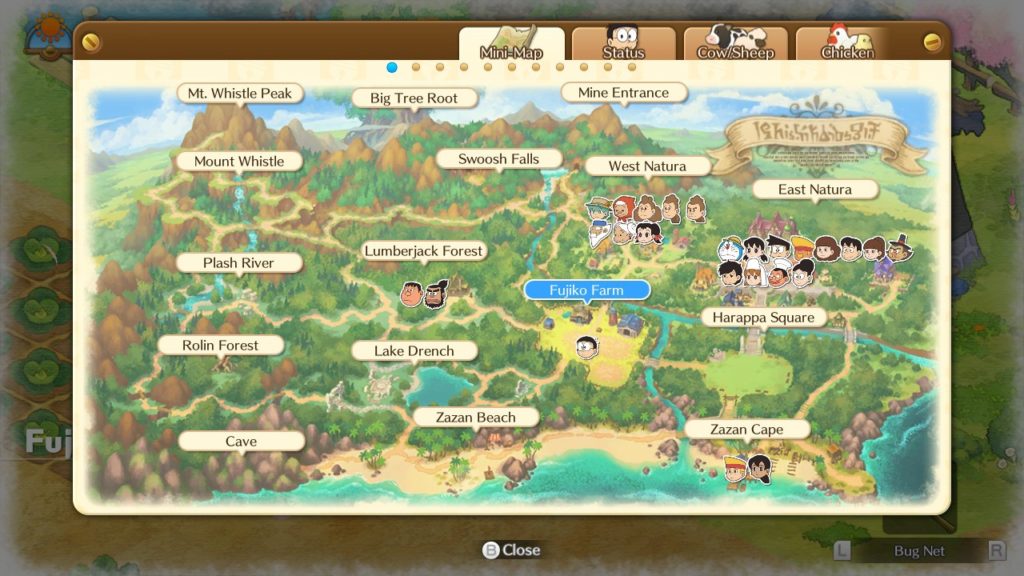
On top of farming and other tasks, which are more satisfying than I anticipated, you’ll also encounter a fair number of anime-style story sequences where, Nobi, Doremon, and company are attempting to find the 22nd century technology to get back home. I won’t ruin the plot but it’s significantly better written than I anticipated, with a fair number of solid jokes and innuendo as well as plain old silliness. Honestly, it’s the best written game of its type that I’ve seen and an absolute joy to play through. It’s campy and innocent but still interesting enough that adult players will find themselves grinning happily along with Nobi and his crew.
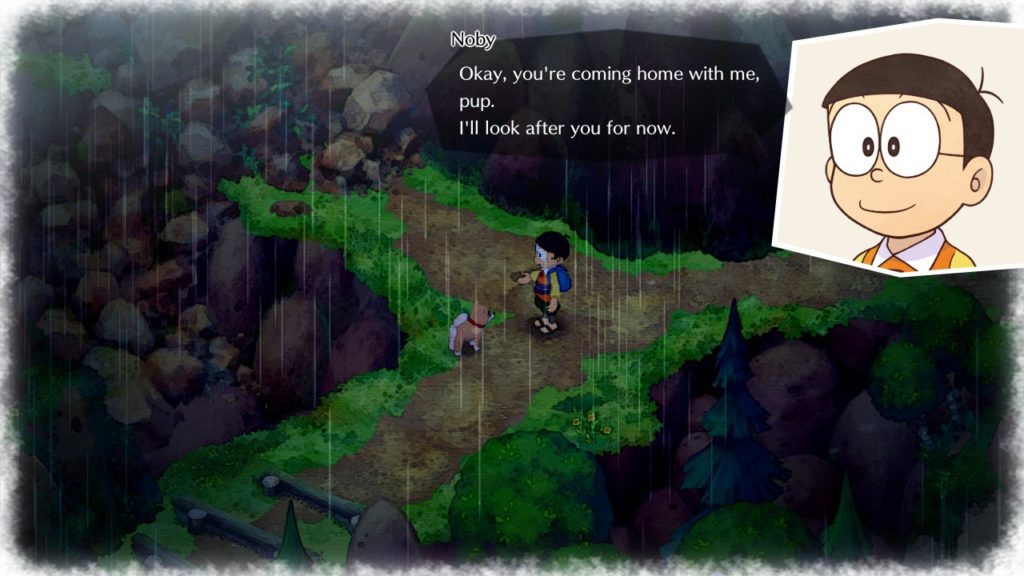
Graphically, the entire game has a pleasant, calming anime feel to it, with a lot of bright colors, excellent cartoony designs, and a clean framerate. Zooming out allows you to organize your farm better and spot things in the world you may have missed. The menu system is clean, intuitive, and well thought out. The characters are fun, well-designed, and most importantly, have personalities. No one feels two dimensional in DSoS. The supporting cast seems like actual townsfolk rather than generic NPCs and you’ll get to know and love almost all of them. Almost. The music is also excellent and doesn’t come on too strong, which could have been irritating in a game like DSoS. Instead, it complements the gameplay well and sometimes you barely notice it. The hallmark of a good composer is one that knows when the music needs to take a background position and when it needs to accentuate the story and that’s definitely accomplished here.
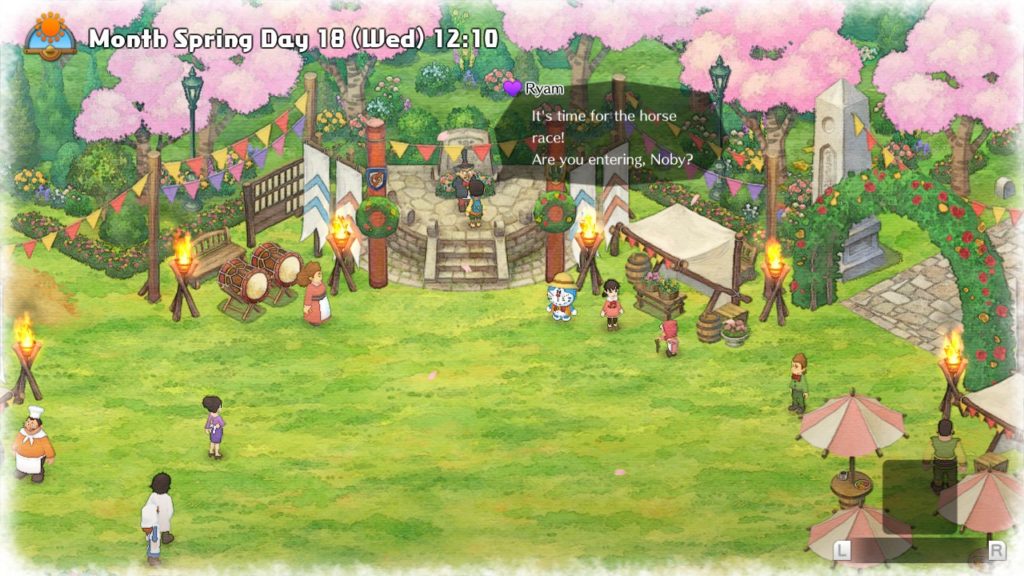
The great thing about DSoS is that you can get as much as you want out of it or as little as you want. If you just want to wander about and farm, you can do that. If you want to really thrown in with the townsfolk, you can do that too. Feel like fishing for a while? Go fish for a few days. Want to see what you can mine to improve your tools? There’s time for it all. It’s simply a relaxing game that really lets you go at your own pace while occasionally throwing more story elements into the mix. I didn’t know what to expect from an anime farming game, but I have to say, DSoS really managed to surprise me. Every time I thought I was getting a bit bored, something else would happen and spice things up a bit. It’s quite satisfying to see a game that could have been somewhat tedious end up being extremely well-paced.
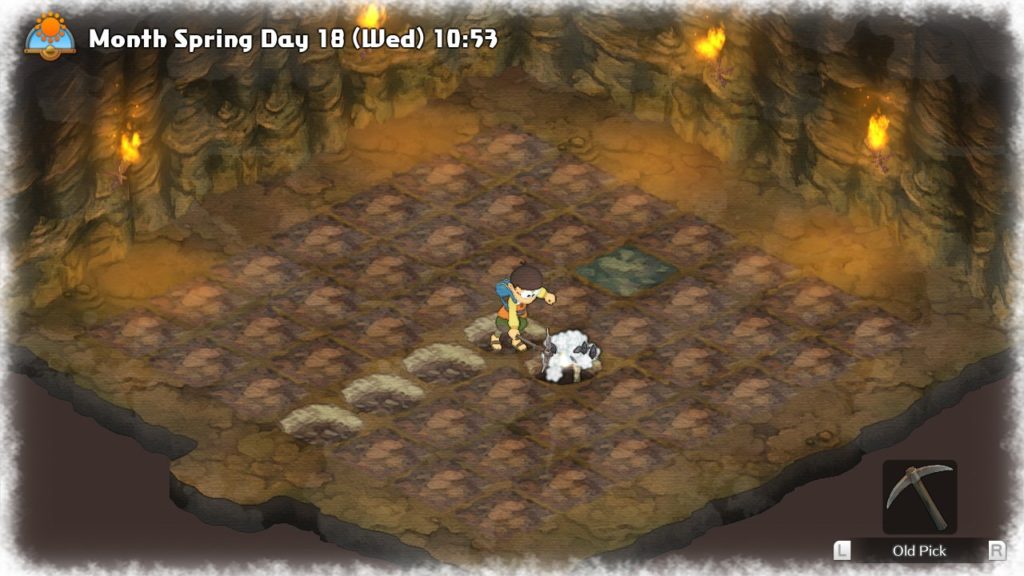
In the end, Doraemon Story of Seasons won’t be for everyone. It’s still a farming sim with anime characters, something that might not even appeal to the farming game subset and definitely won’t appeal to all anime fans. But at the same time, it’s charming, clever, relaxing, and well-made, and those aren’t things to scoff at. With the storyline doing some of the heavy background lifting, Doraemon Story of Seasons manages to really shine and makes an above-average game into a truly great experience. Regardless of what you’re normally into, Doraemon has appeal for a wide range of audiences and the staying power to get your money’s worth, even at the relatively high prices of $50 for a digital only (as of the time this article was written) game. So pick up your favorite watering can, grab that fishing pole, and let’s go on an adventure!
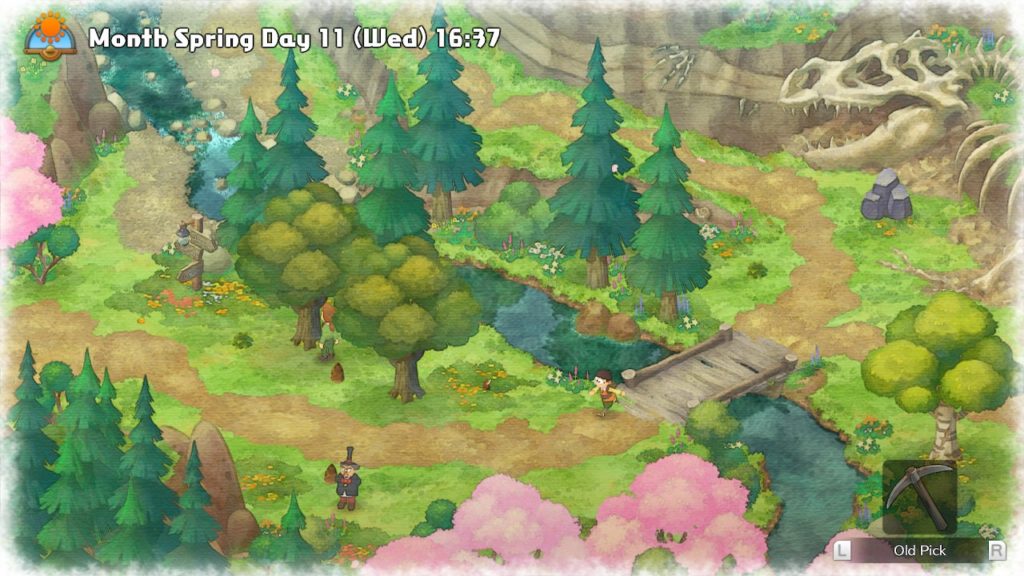
This review was based on a digital copy of Doraemon Story of Seasons provided by the publisher. It was played on a Nintendo Switch in both docked and undocked modes and was equally satisfying on both! It is also available for PC on Steam but is console exclusive to the Switch. Robot cats are awesome! Meeeeeeoooooow!

